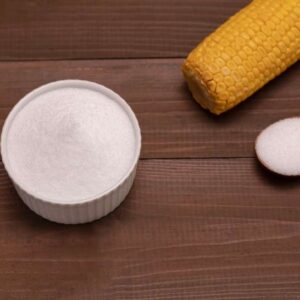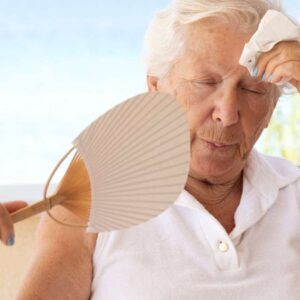
Tiny Toxic Threat Lurking in the Air You Breathe
Imagine taking a deep breath of fresh air, only to realize that—along with oxygen—you’re also inhaling tiny plastic particles.
It may sound like a scene from a science-fiction film, but new research reveals microplastics have found their way into the very air we breathe—and they may pose serious risks to your health.
Recently, scientists discovered that even wild dolphins are exhaling microplastic fibers. This startling finding underscores just how widespread plastic pollution has become.
But it’s not just dolphins at risk—we are breathing in microplastics, too, and the consequences could be devastating.
Microplastics are tiny plastic particles that are less than 5 millimeters in size. They come from the breakdown of larger plastic items like bottles, bags, and clothing.
Over time, plastics degrade into these tiny fragments, which then make their way into our environment—on land, in the water, and even in the air.
While many of us are familiar with the problem of microplastics in our oceans, the fact that we’re inhaling them through the air is less well-known. And that’s exactly what researchers found when studying dolphins in Florida and Louisiana.
These dolphins were exhaling plastic fibers similar to those found in human lungs.
Studies show that inhaling microplastics can lead to a range of health problems, including:
- Lung inflammation: When inhaled, microplastics can irritate lung tissues, leading to chronic inflammation. Over time, this can result in tissue damage, excess mucus production, and conditions like bronchitis or pneumonia.
- Scarring and lung damage: Microplastics can cause scarring in the lungs, similar to what’s seen in people with long-term exposure to dust or other pollutants. This scarring reduces lung function over time.
- Increased cancer risk: Studies suggest that long-term exposure to inhaled plastics could raise the risk of developing lung cancer. While more research is needed, this is a concern given how pervasive plastic pollution is.
It’s easy to assume that microplastics are only a problem for marine life, but the truth is they’re everywhere. You’re most likely being exposed to microplastics in your daily life through:
- Air: Microplastics can become airborne through wind or the action of ocean waves releasing them into the atmosphere. Once in the air, they can travel long distances and reach urban and rural areas.
- Food and water: Microplastics are found in various foods and beverages, including bottled water, seafood, and salt.
- Household dust: Plastics are present in everyday items like synthetic clothing, carpets, and packaging materials. As these items degrade, tiny plastic fibers are released into your home’s air, which you breathe in.
The idea of inhaling tiny plastic particles may feel overwhelming, but there are steps you can take to reduce your exposure:
Use an air purifier: A high-quality air purifier with a HEPA filter can help trap airborne microplastics and other pollutants, reducing the amount you breathe in at home.
Ventilate your home: Keeping windows open and using exhaust fans can help reduce the concentration of indoor pollutants, including microplastics.
Choose natural fabrics: Synthetic materials like polyester and nylon shed plastic fibers over time. Opt for natural materials like cotton, wool, and linen whenever possible.
Filter your drinking water: Install a water filter designed to capture microplastics, especially if you drink bottled water or live in an area with known water pollution.
Avoid single-use plastics: Reducing plastic consumption can help lower the demand for plastic production, reducing plastic pollution over time. Simple swaps like reusable bags, bottles, and containers can make a difference.
Microplastics have infiltrated nearly every aspect of our environment—from the oceans to the air we breathe. While research on their long-term health effects is ongoing, the evidence we have so far is enough to raise serious concerns.
Limiting your exposure to microplastics can help protect your health and reduce your contribution to this growing problem.
P.S. Are microplastics invading your gut barrier?
Source:
Dziobak, M. K., Fahlman, A., Wells, R. S., Takeshita, R., Smith, C., Gray, A., Weinstein, J., & Hart, L. B. (2024). First evidence of microplastic inhalation among free-ranging small cetaceans. PLOS ONE, 19(10), e0309377.
Written By Dr. Scott Olson, ND
Nearly 25 years ago, failed mainstream medical treatments left Dr. Olson in constant pain – and his health in ruins. And that’s when he did something REVOLUTIONARY. He began his career in medicine – and dedicated his life to uncovering the true, underlying causes of disease.
Through his innovative medical practices in Tennessee and Colorado, Dr. Olson has helped cure countless seniors from across America of arthritis… heart disease… diabetes… and even cancer. All without risky prescription drugs or painful surgeries.
View More Free Articles
A New Reason to Ditch Processed Junk
If you’ve ever walked the inside aisles of your local grocery store and thought, “This is all just junk,” your instincts were spot on. A new study published in the journal Thorax just added another red flag to the list of dangers linked to ultra-processed food—a 41 percent higher risk of lung cancer. That’s right....
When Being Winded on Stairs Is Serious (And When It Isn’t)
I had an athlete visit me recently because he experienced shortness of breath while climbing stairs. He is in great shape, so he was worried about what it might mean. “Doc,” he said, “I run five miles three times a week. Why am I huffing and puffing after two flights of stairs?” His concern is...
Study EXPOSES Hidden Danger Lurking in Your Car
We think of our homes and cars as safe havens. But according to a startling new study, they may be flooding your lungs with microscopic plastic particles—every single day. Researchers in France recently found that adults inhale an average of 68,000 microplastic particles daily from indoor air alone. To put that in perspective, that’s about...
Mailbag: Is Modern Food Making You Snore?
“What can cause snoring, and is there a way to correct this issue?” —Seeking Silence Hi Seeking, Snoring happens when the soft tissues in your throat relax and vibrate as air passes through during sleep. While several factors can cause snoring—from sleep position to nasal congestion—I want to share one trigger that might surprise you....
Simple Food Swap SLASHES Dementia Risk 28%
Let’s be honest… who would jump at the chance to cut their dementia risk by 28 percent. And no, you don’t need to run marathons, survive on broccoli, or learn to play the zither (whatever that is) to make it happen. All it takes is one easy swap—something that’s probably already in your refrigerator. Researchers...
This SMART Floss Exposes Hidden Health Danger
Scientists have created dental floss that doesn’t just clean between your teeth—it also tracks your stress while you’re flossing. Now, I know what you’re thinking… “Great—now even flossing is going to stress me out by telling me how stressed I am.” But this fascinating new tool from Tufts University could be a game-changer for understanding...
Is This "Safe" Sweetener Damaging Your Brain?
The headlines are alarming… “Popular Sugar Substitute Linked to Brain Cell Damage” and “Erythritol Could Damage Critical Brain Barrier” are just two of the dozens I’ve spotted recently. But before you toss every sugar-free product in your pantry, let’s take a closer look at what this study actually shows—and what it doesn’t. The latest research...
This Summer Threat Could SPIKE Your Blood Sugar
Picture this… It’s another scorching hot summer day. You crank up the air conditioning while watching the weather forecast, which predicts yet another “record-breaking” heat wave. It’s starting to feel like just another miserably uncomfortable summer. But what you might not realize is that—if you have diabetes—those rising temps could do far more damage to...
Move Over Yogurt—5 Foods That Pack MORE Probiotics
Let’s talk about your gut. The microbiome is the collection of trillions of bacteria and other tiny organisms that live in and on your body—especially in your gut—and help keep you healthy. I’ve written often about how vital it is to maintain a healthy microbiome. And you might have dutifully added yogurt to your shopping...
Is Your Heart Older Than YOU?
Maybe you feel young for your age. Good energy, decent sleep, eating your veggies. But what if I told you your heart might be a decade older than the rest of you? That’s exactly what researchers at Northwestern University found in a new study published in JAMA Cardiology. The average American woman’s heart is about...









